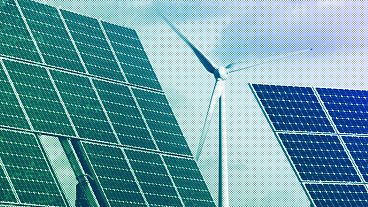In Europe, it was the second warmest April on record.
April 2024 was warmer than any other April on record, continuing an 11-month streak of record-breaking months, Copernicus scientists have said.
Temperatures were 0.67C above the 1991 to 2020 average for the month and 0.14C above the previous high set in April 2016 according to the EU’s climate monitoring service.
March also broke previous records by a tenth of a degree and, while the 11-month streak of temperature records is unusual, something similar happened before in 2015/16.
In Europe, average temperatures during April were 1.49C above the 1991 to 2020 average. This makes it the second warmest April on record for the continent.
Eastern European regions in particular saw temperatures most above average while others like Iceland, Finland, Norway, and Sweden experienced below-average temperatures.
Are the above-average temperatures due to El Niño?
Heat in the ocean also reflects this unusually warm period. Globally, sea surface temperatures for April were an average of 21.04C - the highest value on record for the month and just marginally below the 21.07C seen in March.
El Niño has started to weaken towards neutral conditions but last month’s marine air temperatures in general remained unusually high.
The weather phenomenon doesn’t fully explain the streak of high temperatures seen over the last 11 months either.
“El Niño peaked at the beginning of the year and the sea surface temperatures in the eastern tropical pacific are now going back towards neutral conditions,” says Carlo Buontempo, director of Copernicus Climate Change Service (C3S).
“However, whilst temperature variations associated with natural cycles like El Niño come and go, the extra energy trapped into the ocean and the atmosphere by increasing concentrations of greenhouse gases will keep pushing the global temperature towards new records."
Wet weather and drought in Europe
Most of north-western, central and north-eastern Europe also saw an unusually wet April.
Large parts of eastern Spain, Italy, the western Balkans, Türkiye, Ukraine and southern Russia, as well as Iceland were drier than average during April.
Across southern Europe, drought has been an ongoing problem for months.
In Spain, Catalonia declared a drought emergency in February when reservoirs fell below 16 per cent. Authorities have only just eased water restrictions after recent rainfall.



